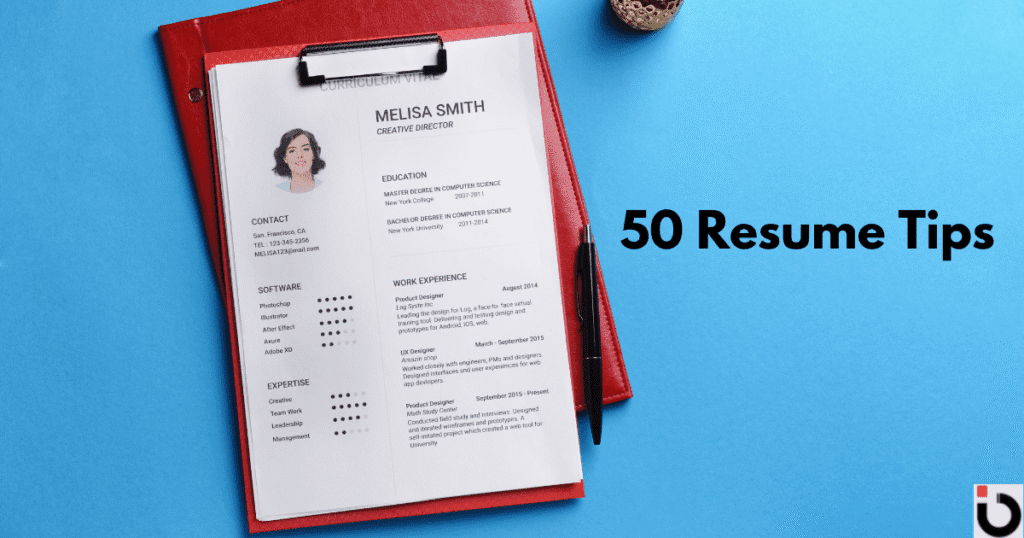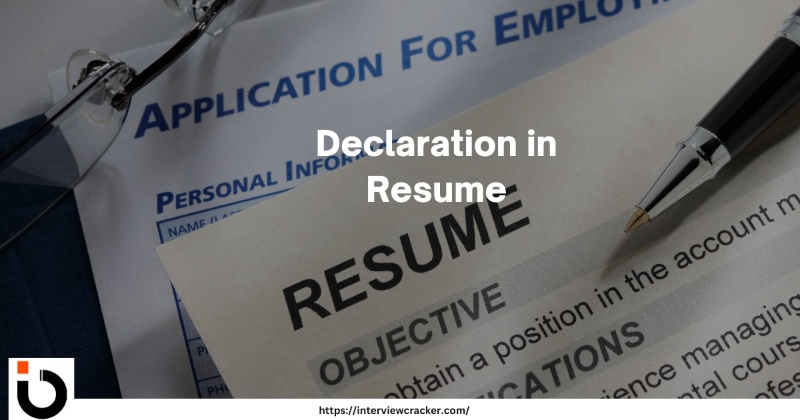Crafting a standout resume is critical in the competitive job market of 2025. A well-structured resume can open doors to interviews and opportunities. Here are 50 actionable resume tips, divided into sections, to help you craft a compelling resume that aligns with modern recruitment trends.
Table of Contents
ToggleKey Takeaways:
Key Takeaway | Details |
|---|---|
Tailor Your Resume for Each Job | Customize your resume with keywords and skills specific to the job description. |
Choose the Right Format | Use a clean, professional layout; opt for chronological, functional, or hybrid formats. |
Focus on Relevant Experience | Highlight roles and skills that directly align with the job you’re applying for. |
Highlight Achievements, Not Tasks | Use metrics and results to show your impact in previous roles. |
Optimize for ATS Compatibility | Avoid images or excessive graphics; stick to simple fonts and formats. |
Use Professional Fonts | Fonts like Arial, Calibri, or Times New Roman ensure readability and professionalism. |
Address Gaps Strategically | Explain employment gaps through positive narratives like skill-building or personal growth. |
Include Soft and Hard Skills | Balance technical skills with interpersonal abilities like teamwork or communication. |
Proofread Thoroughly | Eliminate typos and grammatical errors to maintain professionalism. |
Leverage Finishing Touches | Add a professional summary, relevant certifications, and a strong call to action. |
1. General Formatting and Design Tips
A well-formatted resume immediately catches attention.
- Use a clean, professional layout with plenty of white space.
- Stick to a single-page resume unless you have extensive experience.
- Choose standard fonts like Arial, Calibri, or Times New Roman, and ensure font size is between 10-12 points for readability.
- Save your resume as a PDF to maintain formatting across devices.
- Avoid excessive graphics or colors; keep it simple and professional.
- Use bold and italics sparingly to highlight important sections.
- Use bullet points for easy readability.
- Ensure your resume is ATS-friendly by avoiding fancy designs or unconventional formats.
- Maintain consistent formatting, such as uniform spacing and alignment.
- Limit the use of jargon or overly complex language.
2. Resume Tips for Header Section
Your header is the first thing recruiters see. Make it count.
- Include your full name, professional title, phone number, email, and LinkedIn profile.
- Avoid using outdated email domains; use professional ones like Gmail.
- Ensure your LinkedIn profile URL is customized and concise.
- Add a portfolio link or personal website if relevant to the job.
- Use larger font size for your name to make it stand out.
3. Summary or Objective Statement Tips
This section should succinctly highlight your career goals or achievements.
- Tailor your summary to the job you’re applying for.
- For job seekers with no experience, focus on skills and career aspirations in the objective.
- Use action-oriented language and include key accomplishments.
- Keep it brief—2-3 sentences are sufficient.
- Avoid vague phrases like “hard-working individual” and emphasize measurable skills instead.
4. Resume Tips for Work Experience Section
Showcase your achievements, not just responsibilities.
- List your experiences in reverse chronological order.
- Include quantifiable results (e.g., “Increased sales by 20%”).
- Use action verbs like “managed,” “led,” or “achieved” to describe accomplishments.
- Tailor your experience to match the job description.
- Avoid gaps; if unavoidable, address them briefly in a cover letter or summary.
- Highlight freelance, volunteer work, or internships if you lack formal experience.
- Avoid lengthy paragraphs; use concise bullet points instead.
- Include relevant keywords from the job listing to pass ATS screening.
- Mention promotions or advancements to show growth.
- Focus on transferable skills if switching industries.
5. Education Section Tips
Keep this section concise but impactful.
- List your highest degree first, along with the institution name and graduation date.
- Include coursework or projects relevant to the job, especially for entry-level roles.
- Add certifications or online courses to boost your credentials.
- Omit high school details if you’ve completed a higher degree.
- Mention academic honors, such as “Cum Laude” or scholarships, to stand out.
6. Resume Tips for Skills Section
Highlight both hard and soft skills relevant to the role.
- Create separate sections for technical and soft skills.
- Use specific keywords like “JavaScript,” “data analysis,” or “project management.”
- Avoid listing too many generic skills like “teamwork” or “communication.”
- Back up skills with examples in the work experience section.
- Regularly update skills to reflect industry trends and technologies.
7. Resume Tips for Job Seekers with No Experience
If you’re just starting, focus on potential and transferable skills.
- Highlight internships, volunteer work, or part-time jobs.
- Emphasize soft skills like adaptability, problem-solving, or leadership.
- Use a functional resume format to prioritize skills over work history.
- Include relevant coursework or academic projects under a dedicated section.
- Don’t hesitate to add extracurricular achievements that show initiative.
8. Resume Tips for Experienced
Stay competitive in a modern job market.
- Focus on the past 10-15 years of experience to avoid age bias.
- Remove graduation dates and irrelevant early career roles.
- Showcase tech-savviness by highlighting digital tools or certifications you’ve mastered.
- Use a modern resume format and avoid outdated designs or fonts.
- Emphasize leadership roles, major accomplishments, and mentorship experience.
9. Finishing Touches
Ensure your resume is error-free and polished.
- Proofread thoroughly to eliminate typos or grammatical errors.
- Ask a friend or mentor to review your resume for clarity and impact.
- Add professional references only if requested; otherwise, include “Available upon request.”
- Customize your resume for each application by aligning it with the job description.
- Double-check contact details to ensure they are up-to-date and correct.

Resume Tips for Job Seekers with No Experience / Fresher
Creating a resume as a fresher can be challenging, but by focusing on skills, achievements, and potential, you can make a strong impression. Here are practical tips:
1. Use a Functional Resume Format
- Highlight skills and abilities over work experience.
- Create sections for skills, academic achievements, and volunteer work.
2. Add a Strong Objective Statement
- Write a clear and concise career objective tailored to the job.
- Example: “Motivated computer science graduate with a passion for coding and problem-solving, seeking an entry-level developer position.”
3. Emphasize Education
- Include your degree, college, and graduation date.
- Highlight coursework or projects relevant to the job.
4. Showcase Relevant Skills
- List both hard and soft skills, such as proficiency in MS Office, teamwork, or problem-solving.
- Align skills with those mentioned in the job description.
5. Highlight Internships and Projects
- Treat internships like work experience, detailing your role and contributions.
- Mention significant college or freelance projects, especially those tied to the industry.
6. Include Extracurricular Activities
- Mention leadership roles, club memberships, or participation in competitions.
- Showcase achievements that reflect teamwork or dedication.
7. Leverage Certifications
- Highlight online certifications or short courses you’ve completed.
- Platforms like Coursera, Udemy, or LinkedIn Learning can boost your credentials.
8. Volunteer Work and Community Involvement
- Include any unpaid work that demonstrates initiative or responsibility.
- Example: “Organized a local fundraising event that raised $5,000 for charity.”
9. Focus on Transferable Skills
- Highlight skills that apply across industries, such as communication, organization, or adaptability.
10. Proofread Thoroughly
- Ensure your resume is error-free to create a professional impression.
A fresher’s resume is all about showcasing your potential. With a strategic approach, you can stand out to employers even without formal work experience.
Conclusion
A strong resume tailored to modern job market demands is your first step toward career success in 2025. Focusing on proper formatting, showcasing relevant skills, and tailoring your content to your audience can significantly improve your chances of standing out to recruiters. You can follow these resume tips to craft a resume that gets noticed and also helps you land your dream job.
FAQs on 50 Resume Tips for Getting a Job in 2025
1. What is the ideal length for a resume in 2025?
For most job seekers, a one-page resume is ideal unless you have extensive experience or are applying for senior roles, in which case two pages may be acceptable.
2. How important is formatting in a resume?
Formatting is crucial as it ensures your resume is easy to read and ATS-friendly. Use a clean layout, professional fonts, and consistent spacing.
3. Should I include all my work experiences in my resume?
No, focus on experiences relevant to the job you’re applying for, especially from the last 10–15 years. Avoid overcrowding your resume with irrelevant details.
4. How can I make my resume stand out if I have no experience?
Highlight internships, volunteer work, projects, or coursework relevant to the job. Use a functional resume format that emphasizes skills over work history.
5. What are the best fonts to use for a resume in 2025?
Professional fonts like Arial, Calibri, or Times New Roman are recommended. Avoid overly decorative or hard-to-read fonts.
6. Can I use color or graphics in my resume?
Use color sparingly and avoid overly graphic designs. Stick to a professional look, especially if submitting your resume to an ATS.
7. How can older workers address age bias in resumes?
Focus on the last 10–15 years of relevant experience, remove graduation dates, and showcase proficiency with modern tools and technologies.
8. What keywords should I include in my resume?
Use keywords from the job description that match your skills and experience, such as software tools, technical skills, or industry-specific terms.
9. Is it necessary to customize my resume for each job application?
Yes, tailoring your resume to the job description improves your chances of getting noticed by both recruiters and ATS systems.
10. What should I avoid putting on my resume?
Avoid personal information like age, religion, or marital status. Also, steer clear of vague phrases, excessive graphics, and unprofessional email addresses.






